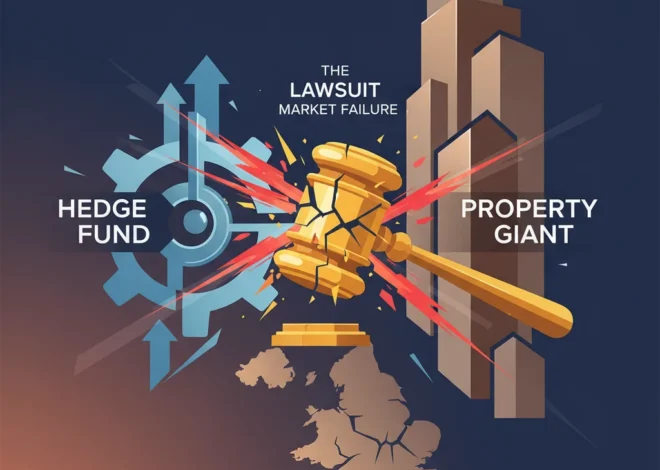
Fiscal Crossroads: Why the UK’s Potential U-Turn on Income Tax Matters for Your Investments and the Economy
A Political Promise Meets Economic Reality
In the high-stakes world of national economics, few decisions are as scrutinized as those concerning taxation. A recent tremor has run through the UK’s financial and political landscape, centered on a single, potent idea: a potential U-turn on raising income tax rates. According to a report from the BBC, Chancellor Rachel Reeves, who was widely expected to consider an income tax hike, is now anticipated to abandon those plans. This move is significant not just for its direct impact on every taxpayer’s wallet, but for what it signals about the government’s priorities, the health of the UK economy, and the delicate balance between campaign promises and fiscal governance.
For investors, business leaders, and anyone with a stake in the UK’s financial future, this is more than just a headline. It’s a critical data point that influences everything from consumer spending and corporate profits to stock market sentiment and long-term investing strategies. In this deep dive, we will unpack the layers of this decision, exploring its implications for the economy, the markets, and the evolving relationship between government policy and financial technology.
The Manifesto Minefield: The Politics of Taxation
At the heart of this issue lies the concept of the manifesto promise. In politics, a manifesto is a sacred pact with the electorate, outlining the policies a party will implement if it wins power. A promise not to raise key taxes—income tax, National Insurance, and VAT—is a common and powerful pledge. Breaking such a promise can lead to a significant loss of political capital and public trust. The current speculation suggests the Chancellor is choosing to uphold this “tax lock,” navigating away from a politically perilous path.
However, this decision is not made in a vacuum. Governments face immense pressure to fund public services like the NHS, education, and defense, all while managing a national debt that has ballooned in recent years. The UK’s public sector net debt was 97.9% of GDP at the end of April 2024, a figure that constrains fiscal maneuverability. This creates a classic political and economic dilemma: how do you fund state obligations without alienating voters or stifling economic growth through higher taxes? Eschewing an income tax rise means the Treasury must find the money elsewhere, delay spending, or accept higher borrowing.
A British Broadcasting Behemoth? Unpacking the Landmark Sky-ITV Takeover Talks
Impact on the Economy and Your Finances
A decision to hold income tax rates steady sends ripples across the entire economic pond. The most immediate effect is on disposable income. For households, it means that a larger portion of any pay rise stays in their pockets, which can bolster consumer confidence and spending—a key driver of economic growth.
For businesses, particularly in the retail and hospitality sectors, this is welcome news. Stable or rising consumer spending translates directly to their bottom line. However, the bigger picture is more complex. If the government compensates for the lost revenue by cutting public spending or raising business taxes (like corporation tax), the net effect could be neutral or even negative for certain sectors. The key question for business leaders is: where will the money come from instead?
A Tale of Two Scenarios
To understand the trade-offs, let’s compare the potential economic outcomes of the two possible paths. The following table provides a simplified overview of the diverging impacts.
| Economic Factor | Scenario 1: Income Tax Rate Rise | Scenario 2: Income Tax Rate Held Steady |
|---|---|---|
| Consumer Spending | Likely to decrease as disposable income falls. Potential slowdown in retail and services. | Remains stable or increases, potentially boosting GDP growth in the short term. |
| Investor Sentiment | Mixed. Could signal fiscal discipline, boosting confidence in government bonds (gilts), but may hurt consumer-facing stocks. | Generally positive for equities, especially consumer discretionary stocks. May raise questions about long-term debt management. |
| Government Revenue | Increases directly, providing funds for public services or debt reduction. | Remains flat, forcing difficult choices on spending cuts, borrowing, or alternative tax rises. |
| Inflationary Pressure | Tends to be disinflationary by reducing aggregate demand in the economy. | Could be mildly inflationary if strong consumer demand outpaces supply. |
The Investor’s Playbook: Navigating the Market Reaction
For those involved in investing and trading, fiscal policy announcements are a critical variable. A decision to forgo an income tax hike would likely be interpreted by the stock market as a pro-growth signal.
Sectors that rely on the UK consumer, such as retail, leisure, and homebuilders, would likely see a positive reaction. Companies in these areas benefit directly when households have more money to spend. Conversely, a tax hike could have sent these stocks tumbling. For investors, this potential policy stability provides a clearer runway for forecasting corporate earnings in consumer-facing industries.
The decision also impacts the bond market. If the government must borrow more to fill the fiscal gap, it might need to issue more gilts. An increased supply of gilts can push their prices down and their yields up. For fixed-income investors, this is a crucial dynamic to watch. Furthermore, international investors’ perception of the UK’s fiscal credibility hangs in the balance. A clear, sustainable plan for managing debt is essential for maintaining confidence in the pound and UK assets.
Beyond the Banks: Is the Entire Financial Sector Due for a Windfall Tax?
Fiscal Policy in the Digital Age: The Fintech and Blockchain Frontier
Beyond the immediate political and economic calculus, this debate highlights a broader trend: the transformation of public finance by technology. Modern governance is no longer limited to the blunt instruments of annual budgets and broad-based tax changes. The rise of fintech and advanced data analytics offers a glimpse into a more dynamic future for fiscal management.
Governments are increasingly leveraging financial technology to improve tax collection and economic monitoring. Initiatives like the UK’s “Making Tax Digital” program are early examples, using digital banking and accounting software to provide real-time data to tax authorities. This data can be used to model the impact of policy changes with greater accuracy and to crack down on tax evasion, which the OECD estimates costs governments hundreds of billions of dollars annually (source).
Looking further ahead, some experts in economics and technology are exploring how emerging technologies like blockchain could revolutionize public finance. A distributed ledger system could, in theory, create a perfectly transparent and efficient tax system, where transactions are taxed automatically and public spending is tracked immutably. While still largely conceptual, this illustrates how the tools available to future Chancellors will be far more sophisticated, potentially allowing for more targeted and less disruptive fiscal interventions than simply raising a headline tax rate.
The Search for Alternatives: If Not Income Tax, Then What?
If a rise in income tax is off the table, the government’s fiscal toolkit is not empty. Several alternative strategies could be deployed to bolster the nation’s finances:
- Fiscal Drag (Stealth Taxes): As mentioned, freezing the thresholds at which people start paying higher rates of tax is a powerful and subtle revenue-raiser. As wages rise with inflation, more people are pulled into higher tax brackets, increasing the overall tax take without changing the rates themselves. The Institute for Fiscal Studies (IFS) has frequently highlighted this as a major source of recent increases in tax revenue (source).
- Reforming Capital Gains and Inheritance Tax: These taxes are often seen as fairer targets as they primarily affect wealthier individuals. Aligning capital gains tax rates with income tax rates or simplifying inheritance tax could raise significant sums, though such moves are also politically contentious.
- Broadening the Base of VAT: The UK’s Value Added Tax has numerous exemptions for items like most food, books, and children’s clothing. Removing some of these exemptions could raise billions but would be regressive, hitting lower-income households the hardest.
- Focus on Economic Growth: The ultimate solution is to grow the economy. A larger, more productive economy naturally generates more tax revenue without any changes to the rates. This is the “holy grail” for any government, requiring long-term strategies in education, infrastructure, and creating a competitive business environment.
The Incentive Engine: Why Some Economies Soar While Others Stagnate
Conclusion: A Calculated Move with Far-Reaching Consequences
The anticipated decision to hold income tax rates steady is far more than a simple policy choice; it is a strategic maneuver at the intersection of politics, economics, and public perception. It represents a bet on economic stability and consumer confidence over immediate fiscal consolidation through personal taxation. For the general public, it offers a degree of certainty. For businesses and investors, it signals a potentially more predictable and pro-growth environment in the near term, though questions about the UK’s long-term fiscal health will undoubtedly remain.
As the UK navigates its post-pandemic economic recovery, every fiscal decision will be magnified in importance. This U-turn, if confirmed, will set the tone for the government’s entire economic strategy, with profound implications for every aspect of the nation’s finance—from the stock market to the high street and back again.


